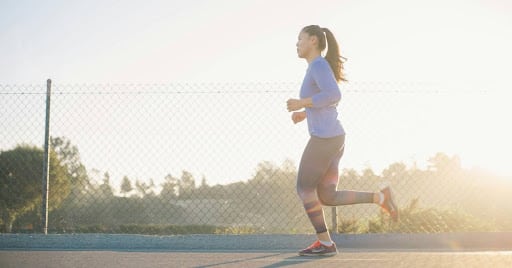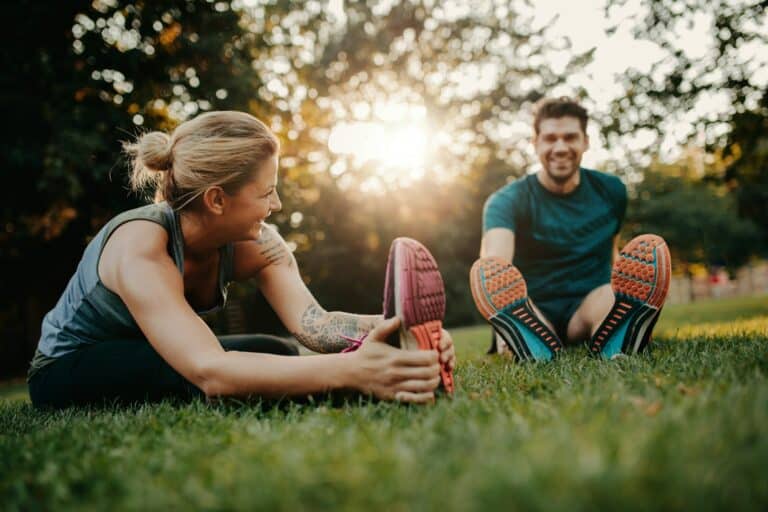Many people today are conscious of the importance of health and fitness in everyday life. If you are among this savvy group, you may be considering whether to include low-impact exercise in your workouts. Should you also incorporate body weight resistance training in your routine?
With the wide array of updated exercise programs and workout instruction currently available, choosing a fitness plan can be difficult. You want to determine what exercise method and techniques will benefit your health and wellness the most. You also want to pinpoint forms of fitness training that are not a good choice for your personal fitness routine.
You have no doubt heard the terms high-impact, high-intensity, mild or low-impact, or no-impact relative to contemporary fitness instruction. Especially if you are fairly new to exercise instruction and regimens, you may be unsure of what type to choose. What mode of physical fitness instruction will benefit you the most while offering a safe exercise plan?
Forms of Low-Impact Exercise
Mild-impact exercises typically cause little stress or strain on your joints and are healthy routines for all ages. Since they have little impact on your joints and connecting tissues, practicing these exercises can help prevent joint damage. If you engage in high-impact instruction, incorporating low-weight-bearing exercises in your routine can safeguard against joint stress, damage and pain.
Popular cardio workouts like running and high-intensity interval training (HIIT) do give your cardiovascular system and muscles a good workout. Yet they sometimes cause or contribute to joint pain or injuries. You can actually gain equally healthy benefits from practicing low-weight-bearing routines.
You can engage in mild-impact exercise for longer time periods than you can practice most high-impact routines. For this reason, you can gain ultimate benefits safely and effectively from these lower-stress routines. Low-impact exercise includes swimming, tai chi, yoga, PiYo (a blend of pilates and yoga), walking and biking. Such exercise equipment as rowing machines, stair steppers and elliptical machines are also low-weight-bearing options.
Major Benefits of Mild-Impact Workouts
After high-impact workouts, your body needs periods of downtime to rest, repair bodily stress and rebuild energy levels. When you practice mild-impact routines, however, your body generally requires much less time to rest between exercise sessions. Contrary to the common opinion that only high-impact workouts can result in weight loss, mild-impact exercise is equally effective. By engaging in low-weight-bearing routines regularly, you can drop excess pounds safely without experiencing stress or fatigue.
Additional benefits offered by low-weight-bearing workouts include the following:
• Improved body strength
• Reduced physical and mental stress
• Greater muscle flexibility
• Better balance and faster reflexes
• Lower blood pressure counts
• Less risk of musculoskeletal injury
Healthy Mild-Impact Exercises to Include in Your Workouts
The following low-weight-bearing exercises are healthy to include in your regular workouts, especially for beginning fitness instruction:
- Bridge with Chest Press. Lying on your back with your knees bent, position your feet hip-distance apart, with your heels a few inches from your buttocks. Hold a dumbbell in each hand and be sure to keep your feet flat on the ground throughout the exercise. Begin by lifting your hips as you flex your glute muscles, creating a diagonal line between your shoulders and knees. In this bridge position, move your arms out to each side, bending your elbows to form a 90-degree angle, with your hands pointing upward. Move the dumbbells inward until they touch above your chest, then slowly lower them back to the floor. This exercise will strengthen the muscles in your core, chest and buttocks as well as your hamstrings.
- Dumbbell Thruster. While standing, position your feet at hip-distance apart, holding a dumbbell in each hand. Your palms should face inward with your elbows bent so that your hands are at shoulder height. With your hips hinged back, lower your body into a low squat position. In one movement, push upward starting in your heels and stand, pressing the dumbbells overhead. Then return to the squat position and repeat the movement. This compound exercise works multiple muscle groups while burning extra calories.
- Low-Weight-Bearing Jumping Jacks. Rather than jumping up and down, move your right foot outward while moving your arms up over your head. Then repeat this movement while moving your left foot. Continue alternating feet while repeating the upward arm movement. This exercise works the muscles in your arms, chest and legs while benefiting your cardiovascular system.

- Squat to Jab. To practice this mild-impact exercise, assume a squat position while holding your chest up, your hips back and your knees facing outward. Throw a cross-body punch with each arm, then return to a standing position and repeat. This routine gently works multiple muscle groups in your body without the need for any impact or stress on your joints.
- Boat Pose. Sitting with knees bent and both feet flat on the floor, grasp your legs above the knees, under your thighs. As you lean slightly backward, lift both feet off the floor until your shins form parallel lines with the floor. With your palms facing upward, move your arms out in front of you and keep them straight at shoulder level. As you straighten up, move your legs upward toward the ceiling. When your body assumes a V-shape, hold this position for about 10 to 20 seconds. This exercise is excellent for healthy strengthening and correct positioning of your abdominal muscles.
- Plank Jacks. Assume a high plank position, with your upper body raised and supported with straight arms and both palms flat on the mat. On your toes, keep your legs straight and butt elevated. With your core engaged, move your feet in and out like you are performing jumping jacks on the mat, and land on your toes. This plank exercise is very effective for working your core and shoulder muscles. If the repetitive “jumping jack” motion bothers your legs or toes, you can walk your legs in and out instead of jumping.
- Dumbbell Deadlift. Stand straight with your feet positioned about hip-width apart. With a dumbbell in each hand, move your hands in front of your body with your palms toward your thighs. You should begin with a medium-resistance weight of about 10 or 12 pounds, advancing later to heavier ones. With your knees bent slightly, move your hips backward, lowering the weights downward in front of your legs. As the weights move lower, keep them near your shins. Slowly reverse this movement until you return to the standing position, and then repeat. This exercise tones and strengthens the glutes.
- Step Up with Reverse Lunge. Stand about one foot away from a step or sturdy box. As you step up with your left foot, move your right knee upward, closer to your chest. Move your right foot back to your starting position, then step back with your left foot into a lunge. As you lower your knee toward the floor, keep your right knee from moving past your right toes. Step onto the box or step again with your left foot and repeat. Then perform these same movements, but stepping up with your right foot. This exercise is great for working your leg muscles and your abs, and it also improves your general balance.
Forms of Body Weight Resistance Exercise
Body weight resisting instruction typically offers closed chain exercise. These are routines that you perform while connected to the ground. Exercises like squats and push-ups are designed for strengthening your joints. They also enable your body to work as a unit while performing a specific fitness movement.
When performing push-ups, your chest and shoulder muscles are the main focus. Yet your triceps, upper back and core muscles along with your hip flexors must coordinate efforts to control the movement. By practicing this and other body weight exercises regularly, you will gain kinesthetic awareness, or improved bodily control when moving.
This form of fitness instruction is also designed to improve your balance and posture during instruction and in everyday life. By using better form during workouts and as you move, stretch and twist during daily activities, you can avoid injuries. You can also conserve energy and avoid feeling overly tired or experiencing fatigue at the end of a busy day.
Fitness Benefits of Body Weight Resistance Instruction
A primary benefit of body weight resisting instruction is its capacity to strengthen your entire body without stress and strain. By improving joint flexibility while coordinating movement in multiple body muscle groups at the same time, it enhances balance. This instruction also helps you to avoid injuries and bodily harm due to slips, falls and muscle stress each day.
More valuable benefits of body weight resisting instruction include the following:
• Improved muscle strength and muscle fiber growth
• Greater endurance from practicing compound movements
• Better cardiovascular health
• Reduced strain on joints during health-promoting instruction
Types of Body Weight Resisting Instruction
For beginning and intermediate fitness enthusiasts, the following body weight resisting routines are recommended:
- Lateral Shuffle. In a standing position, shift your body weight forward, to the right. Pick up your right foot and push from your left foot, moving your body to the right. You can then repeat this exercise, moving to the left. Taking care to keep good posture and form, move quickly, increasing your speed with experience.
- Power Skip. Standing with your feet hip-width apart, keep your core tight. Raise your right knee while moving your left arm forward. Hop off your left foot, taking care to land on the ball of your foot. Bringing your right foot back down, repeat this series of motions on the other side. You should focus on the height of each hop and maintaining a tight core, not on increasing your speed.
- Mountain Climber Twist. Begin in a high-plank position, keeping your core tight. Move your left knee inward toward your right elbow, then bring your right knee in toward your left elbow. Repeat as rapidly as you can, taking care not to hike-up your hips. If you find the twisting motion difficult at first, just move your knees toward your chest instead of twisting.
- Inchworm. With your feet placed at hip-width apart and keeping your core tight, bend forward from the waist. Placing your hands on the floor, walk your hands forward without bending your legs. When you reach a high-plank position, rapidly walk your hands back to your feet and return to a standing position.
- Punch. Begin while standing in a split-stance with your right foot a step in front of your left foot and your hips facing forward. Raise both of your fists, with your elbows close to your ribs. Punch forward with your left hand, rotating your torso slightly. Punch quickly several times, and then repeat the exercise with your left foot in front and punching with your right hand.
- Skaters. Keeping your knees bent, stand with your feet hip-width apart. Jump to your right, landing on the ball of your right foot. At the same time, swing your left foot upward, behind your right leg as if you were ice skating. Repeat this movement on the other side, jumping to the left and landing on the ball of your left foot. Continue to repeat, alternating sides.
Practical Benefits of Workouts Using Low-Impact and Body Weight Resisting Instruction
As you can see, there are many varied health and fitness benefits to engaging in low-impact and body weight resisting instruction. With regular workouts, you can improve the activity of all of your body’s systems, especially your cardiovascular system. Your breathing and endurance will be significantly better, and the activity of your digestive system will also be enhanced.
There are also major practical advantages to choosing low-weight-bearing and body weight resisting instruction for your fitness workouts. You can save time and money since these exercises can be performed in a gym or at home. No costly equipment is needed, and these routines can be modified to suit any fitness level while offering tangible results.
Since many of these exercises involve compound movements, they strengthen several joints and muscle groups at once. Trainers report that performing just one routine of 10 sets of 10 squat-jumps results in enhanced muscle fibers. Low-impact and body weight resistance routines can be safely performed by exercise enthusiasts of all ages and experience levels. You can become physically fit, lose weight, improve mental alertness and feel energized and healthy as your skills advance.




